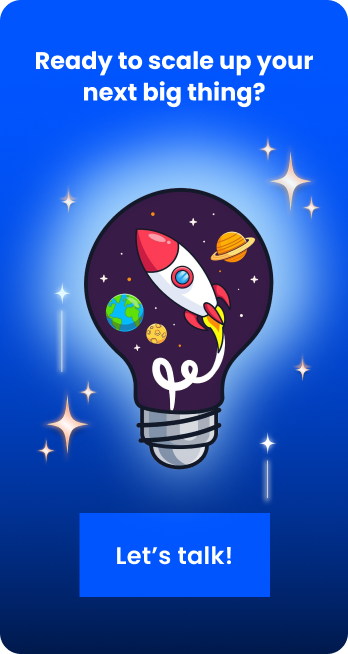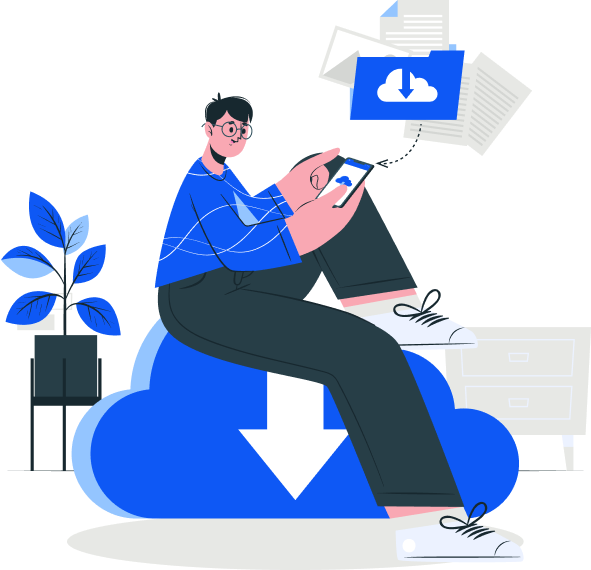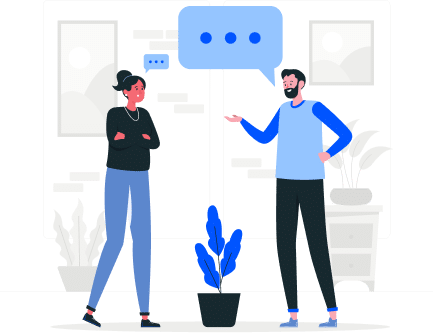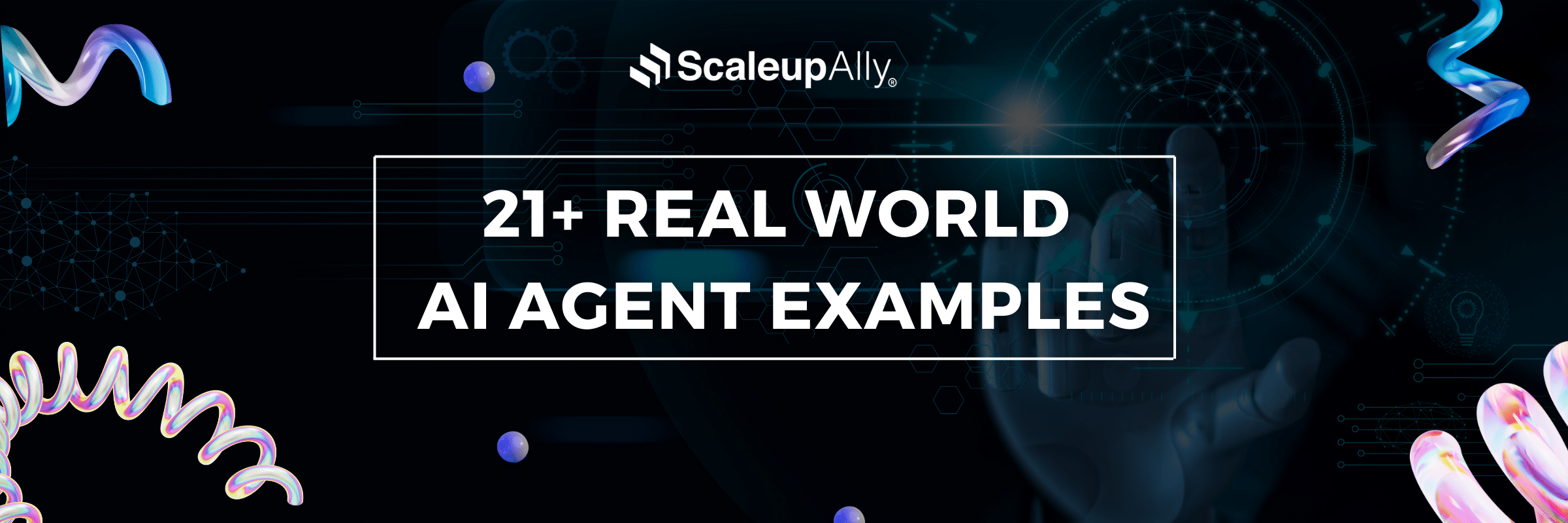
21+ Real World AI Agent Examples
Manu Jain | May 2, 2025 , 9 min read
Table Of Content
AI agents are no longer futuristic concepts—they’re already shaping industries and everyday life. From personal assistants to complex automation tools, these intelligent systems are quietly transforming how we work, live, and interact.
In this article, we will explore 22 real-world AI agent examples, their types, features and the industries benefiting from them.
Key Takeaways
- AI agents are software systems that can perceive, decide, and act toward goals.
- They’re used across industries like healthcare, finance, customer service, and more.
- Different types of AI agents include simple reflex, model-based, goal-based, utility-based, and learning agents.
- Real-world AI agents range from Siri and Alexa to autonomous vehicles and recommendation systems.
- AI agents are helping businesses automate, optimize, and personalize at scale.
5 Types of AI Agents
AI agents come in various forms, each designed for different environments and goals. Below are five core types, explained with examples.
1. Simple Reflex Agents
These AI agents operate based on predefined rules that react directly to current perceptions. They don’t consider past events or future outcomes—perfect for basic, rule-based environments.
2. Model-Based Reflex Agents
Unlike simple reflex agents, model-based agents maintain an internal representation of the world. This model helps them make decisions even when some information isn’t immediately observable.
3. Goal-Based Agents
Goal-based agents don’t just react—they actively pursue objectives. They evaluate possible actions to determine the best way to achieve a specific goal, making them more adaptable in dynamic environments.
4. Utility-Based Agents
These agents take goal pursuit further by considering preferences or “utilities” between different outcomes. They aim for actions that maximize overall satisfaction, especially useful in complex decision-making.
5. Learning Agents
Learning agents improve over time by analyzing experiences. They use feedback from the environment to refine their decision-making, making them ideal for tasks requiring continuous adaptation.
Real-World AI Agent Examples
AI agents aren’t confined to labs—they’re already embedded in tools and platforms we use daily. Here are 22 practical examples transforming industries and user experiences.
1. Siri
Siri, Apple’s voice assistant, uses natural language processing to understand and respond to user commands. It integrates with multiple apps to handle queries, set reminders, and control smart devices.
Key Features:
- Voice-activated assistance
- Integration with Apple ecosystem
- Personalized recommendations
- Ongoing learning from user behavior
2. Amazon Alexa
Alexa is an AI agent embedded in Amazon Echo devices, enabling users to control smart home devices, play music, shop online, and access information through voice.
Key Features:
- Supports third-party skills integration
- Smart home control
- Multi-language capabilities
- Always-on listening mode
3. Tesla Autopilot
Tesla’s Autopilot is an AI agent enabling semi-autonomous driving. It uses real-time data from cameras, radar, and sensors to navigate roads, change lanes, and avoid collisions.
Key Features:
- Lane centering and adaptive cruise control
- Automatic emergency braking
- Over-the-air software updates
- Real-time object recognition
4. Google Assistant
Google Assistant helps users perform tasks using voice or text commands. It connects with Google services to answer questions, manage schedules, and control compatible devices.
Key Features:
- Natural conversation abilities
- Smart home integration
- Personalized routines
- Multilingual support
5. IBM Watson
Watson is an enterprise-grade AI agent known for its ability to process large datasets, understand natural language, and provide insights across healthcare, finance, and research.
Key Features:
- Advanced natural language understanding
- Data-driven insights generation
- Scalable for enterprise use
- Supports custom AI solutions
6. Replika
Replika is an AI-powered chatbot designed for emotional support and conversation. It adapts to user responses to create a more personalized interaction over time.
Key Features:
- Context-aware conversation
- Emotional intelligence simulation
- Personalized learning
- Gamified experience features
7. Google Bard
Bard is Google’s conversational AI designed to assist with research, creative writing, and information gathering using natural language inputs.
Key Features:
- Connects to live web data
- Generates summaries and responses
- Supports ideation and content drafting
- Integrates with Google tools
8. ChatGPT
Developed by OpenAI, ChatGPT is a large language model acting as a conversational agent for answering questions, generating content, and simulating dialogue.
Key Features:
- Conversational context retention
- Multi-domain knowledge
- API availability for developers
- Custom instruction-based tuning
9. Salesforce Einstein
Einstein is Salesforce’s AI agent that helps automate CRM tasks like lead scoring, customer insights, and personalized marketing recommendations.
Key Features:
- Predictive analytics
- Workflow automation
- Personalized customer interactions
- Integrated within Salesforce platform
10. DJI Autonomous Drones
DJI’s autonomous drones use AI agents for obstacle detection, route planning, and automated flight operations without manual control.
Key Features:
- Real-time object tracking
- Smart return-to-home feature
- Autonomous navigation in GPS-denied areas
- AI-based image recognition
11. Grammarly
Grammarly uses AI to analyze writing for grammar, tone, clarity, and style. It acts as a real-time assistant for improving communication.
Key Features:
- Contextual writing suggestions
- Tone detection
- Multi-language support
- Integration with multiple platforms
12. Netflix Recommendation System
Netflix’s AI recommendation engine analyzes viewing history and preferences to suggest personalized movie and show recommendations.
Key Features:
- Collaborative filtering algorithms
- User behavior analysis
- Real-time personalization
- Continuous model retraining
13. Google Maps
Google Maps uses AI to provide real-time navigation, traffic predictions, and route optimization for millions of users daily.
Key Features:
- Live traffic updates
- Predictive travel time estimates
- Dynamic rerouting
- AI-powered location search
14. OpenAI Codex
Codex is an AI agent that converts natural language prompts into code, powering tools like GitHub Copilot for developers.
Key Features:
- Code generation in multiple languages
- Autocomplete for coding tasks
- API for integration into dev tools
- Learns from public code repositories
15. Meta’s BlenderBot
BlenderBot is Meta’s conversational AI agent designed for open-domain conversation, learning from public internet data.
Key Features:
- Multi-turn dialogue handling
- Access to public web knowledge
- Human-like conversational tone
- Continuous improvement via user interactions
16. Pinterest Lens
Lens is an AI agent allowing users to search visually by uploading images to find related products or ideas.
Key Features:
- Image recognition-based search
- Integration with Pinterest search engine
- Shopping suggestions based on visuals
- Object detection in photos
17. Baidu Apollo (Autonomous Driving)
Apollo is Baidu’s AI platform for autonomous vehicles, offering capabilities for perception, decision-making, and control.
Key Features:
- Real-time environment mapping
- Obstacle detection and avoidance
- Traffic rule adherence
- Continuous learning from road data
18. Kuki (formerly Mitsuku)
Kuki is an award-winning AI chatbot known for its conversational ability, winning the Loebner Prize multiple times.
Key Features:
- General conversation handling
- Personality-based responses
- Multi-platform integration
- Engages in casual chat
19. Zoho Zia
Zia is Zoho CRM’s AI agent offering predictions, anomaly detection, and sales insights for businesses.
Key Features:
- Sales trend prediction
- Lead scoring automation
- Anomaly detection alerts
- Natural language query support
20. Stitch Fix’s AI Stylist
Stitch Fix uses an AI agent to analyze customer preferences and deliver personalized clothing recommendations.
Key Features:
- Customer style profiling
- Purchase history analysis
- Predictive fashion trends
- Human stylist collaboration
21. Spotify’s Recommendation Engine
Spotify’s AI agent curates personalized playlists and song recommendations by analyzing listening habits and preferences.
Key Features:
- Collaborative filtering
- Behavioral listening patterns
- Discover Weekly curation
- Continuous model optimization
22. LinkedIn’s People You May Know
LinkedIn’s AI-powered recommendation system suggests new connections based on shared networks, industries, and activity.
Key Features:
- Social graph analysis
- Profile similarity matching
- Interaction-based recommendations
- Continuous learning from user behavior
Top Industries Leveraging AI Agents to their Benefit
AI agents aren’t limited to tech—they’re making waves across sectors. Here’s how different industries are benefiting from their deployment.
1. Healthcare
AI agents help healthcare providers automate diagnosis, analyze medical images, assist with patient triage, and streamline administrative tasks like scheduling. They’re improving patient outcomes while reducing costs and clinician burnout through data-driven insights and automation.
2. Finance
In finance, AI agents detect fraud in real-time, automate credit scoring, power algorithmic trading strategies, and deliver personalized financial advice. Banks and fintech companies use AI agents to improve security, compliance, and customer engagement simultaneously.
3. Retail
Retailers leverage AI agents for inventory management, dynamic pricing, demand forecasting, and personalized marketing campaigns. These agents help create seamless omnichannel experiences, optimize supply chains, and increase customer lifetime value.
4. Manufacturing
AI agents in manufacturing predict equipment failures before they happen, optimize production schedules, and monitor product quality in real-time. This leads to fewer disruptions, lower costs, and more efficient operations on the factory floor.
5. Transportation
AI agents enable autonomous vehicles, manage fleet operations, optimize delivery routes, and even control traffic flow in smart cities. Their use is driving down costs, improving safety, and reducing environmental impact in logistics and mobility.
Conclusion
AI agents are rapidly becoming essential across industries, driving automation, efficiency and smarter decision-making. From healthcare to retail, these systems are changing how businesses operate and deliver value.
As AI technology advances, we can expect even more innovative applications that push boundaries and create transformative opportunities across sectors.
At ScaleupAlly, we offer Gen AI development services to diverse industries, helping them streamline their operations.
Frequently Asked Questions
Q: What exactly is an AI Agent?
An AI agent is a system that perceives its environment, processes information, and takes actions toward a goal.
Q: Where are AI agents commonly used?
AI agents are used in industries like healthcare, finance, retail, transportation, and customer service.
Q: Are AI agents the same as chatbots?
Not exactly—while some chatbots are AI agents, AI agents cover a broader range of intelligent systems beyond text-based conversations.
Related Blogs
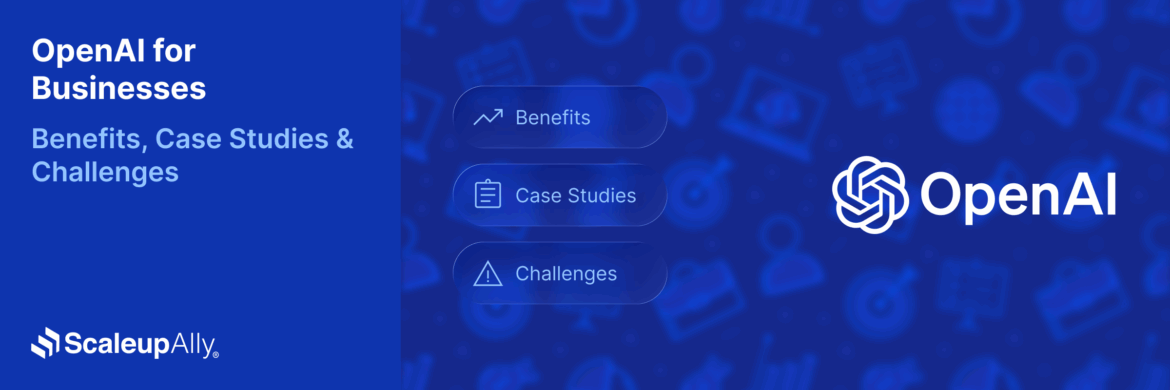
OpenAI for Businesses [Benefits, Use Cases & Challenges]
Discover the benefits of OpenAI for businesses. From reducing costs to scaling operations and enriching customer experiences. Real-world use cases included.
ScaleupAlly Team
Dec 16 ,
11 min read
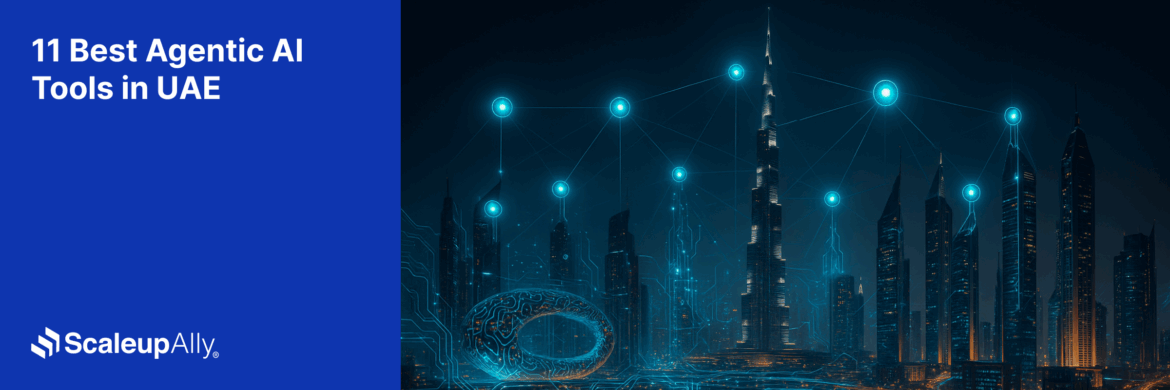
Best 11 Agentic AI Tools in UAE: Accelerating Digital Transformation
Discover the top 11 agentic AI tools in UAE for 2025. Explore features, benefits, and tips to choose the right AI tool for your business growth.
Manu Jain
Nov 6 ,
9 min read
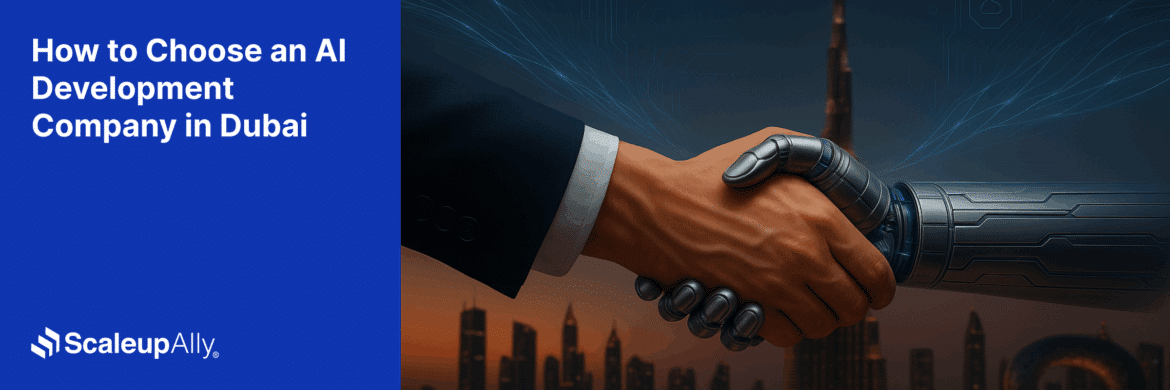
How to Choose an AI Development Company in Dubai: A Complete Guide
Find out how to choose the right AI development company in Dubai. Learn key factors, local considerations, and tips to select the best partner.
Manu Jain
Nov 6 ,
9 min read
